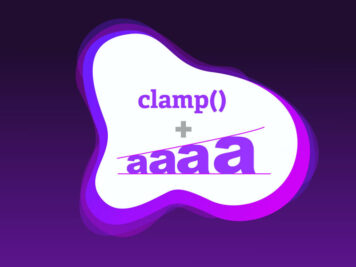ES2024, the next evolution of ECMAScript (the standard behind JavaScript), is expected to introduce new features to simplify coding patterns, improve performance, and enhance the developer experience. These updates will likely significantly impact front-end developers, making JavaScript more powerful and flexible.
Here’s a detailed look at the key features of ES2024 and how they may impact front-end development:
Pattern matching
Pattern matching, a feature similar to switch statements but more powerful and expressive, is anticipated to be part of ES2024. It allows developers to deconstruct and compare values using more advanced conditional logic. This feature is similar to pattern matching found in languages like Scala or Rust
How it impacts front-end developers
- Cleaner code: With pattern matching, conditional logic becomes cleaner and easier to maintain, especially when dealing with complex structures.
- Improved readability: It simplifies the process of working with structured data like arrays or objects, making code easier to read.
Set methods
The ES2024 standard is expected to add new methods to the Set object. These methods will allow for more convenient manipulation of sets, making performing operations like intersection, difference, and union easier.
How it impacts front-end developers
- Efficient data manipulation: Developers will have more built-in tools to manipulate sets, avoiding the need for external libraries or complex workarounds.
- Simpler code: Common operations like comparing sets will be much easier to implement, reducing boilerplate code.
Temporal API
The Temporal API is expected to revolutionize how JavaScript handles dates and times. It offers a more robust and flexible way to handle date-time operations, addressing many of the pain points associated with the existing Date object, like time zone management and formatting issues.
How it impacts front-end developers
- Better date manipulation: Temporal simplifies the handling of dates and times, especially when dealing with time zones and different locales.
- Reduced reliance on libraries: With Temporal, the need for external libraries like Moment.js or date-fns may diminish, as the API natively provides rich functionality for working with dates.
Array grouping and grouping by
Another helpful addition in ES2024 is the Array.prototype.group and Array.prototype.groupBy methods. These methods allow developers to group elements of an array by a certain key or condition, making it easier to organize data without manually iterating over arrays.
How it impacts front-end developers
- Simplifies data transformation: This will be particularly helpful for front-end applications that process large datasets (e.g., sorting products by category in an e-commerce app).
- Improved readability: Grouping logic will now be more declarative, reducing complexity and improving code maintainability.
New symbol capabilities
ES2024 is set to expand the functionality of Symbol, a primitive introduced in ES6. Symbols are often used to create unique identifiers, but in ES2024, new capabilities could allow symbols to be more easily shared across execution contexts or scopes.
How it impacts front-end developers
- Safer global state management: Developers working on large front-end applications will benefit from more secure ways to manage unique keys across different modules or libraries.
- Enhanced flexibility in meta-programming: Symbols can be used for more complex meta-programming techniques in large-scale applications.
WeakRefs and FinalizationRegistry improvements
WeakRefs, which were introduced in earlier ECMAScript editions, allow developers to hold “weak” references to objects, meaning they won’t prevent the garbage collector from cleaning up those objects when they’re no longer needed. ES2024 aims to improve WeakRefs and FinalizationRegistry.
How it impacts front-end developers:
- Memory optimization: Front-end developers working on resource-intensive applications (like games or data-heavy visualizations) will benefit from more efficient memory management with improved WeakRefs.
- Improved performance: These improvements will result in more predictable and efficient memory use, especially in scenarios involving large DOM trees or heavy graphics processing.
Improved promises and asynchronous programming
JavaScript’s asynchronous programming model will receive some updates, with further refinements to Promise.any() and possible improvements to how async/await handles error propagation and performance.
How it impacts front-end developers
- More robust error handling: These changes will make it easier to work with asynchronous code, providing more reliable ways to handle multiple promises and reduce complexity in async code.
- Better performance: Optimizations in promise handling can result in faster execution of async-heavy applications, such as those involving real-time data fetching or event handling.
Impact on front-end development conclusion
ES2024 will bring several impactful changes that front-end developers should look forward to. The introduction of pattern matching, enhanced date handling with Temporal, new set methods, and improved memory management will make JavaScript more capable and intuitive. Developers working on complex applications will particularly benefit from these features, leading to more efficient, readable, and maintainable code.
Staying ahead by learning and experimenting with these upcoming features will empower developers to build faster, more powerful web applications as JavaScript continues to evolve.









